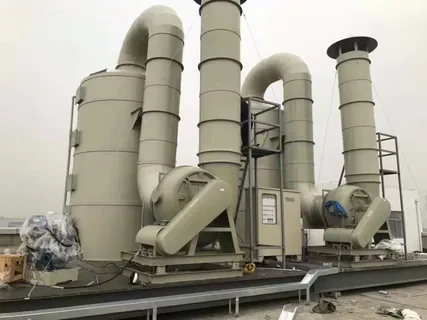Introduction
The US Scrubber System Market is experiencing consistent growth, driven by the nation’s strong focus on environmental sustainability, emission control regulations, and industrial modernization. Scrubber systems are critical in reducing air pollutants such as Sulphur oxides (SOx), nitrogen oxides (NOx), and particulate matter from industrial exhaust gases. They play a vital role in sectors like marine, oil & gas, chemical manufacturing, and power generation. With the US tightening its environmental standards under the Clean Air Act and increasing the adoption of green technologies, demand for both wet and dry scrubber systems is on the rise across industries.
Market Drivers
One of the primary drivers of market growth is the implementation of stringent environmental policies by the Environmental Protection Agency (EPA). Industrial plants, especially in power generation, cement, and refineries, are under growing pressure to comply with emission norms. The maritime industry is another key growth driver following the International Maritime Organization (IMO) 2020 Sulphur cap, which has prompted widespread adoption of marine scrubbers. Furthermore, increasing public awareness of air pollution and the need for sustainable industrial practices are encouraging businesses to invest in advanced air purification systems.
Market Challenges
The market faces challenges in terms of high installation and maintenance costs, particularly for retrofitting existing plants. Small and medium-sized enterprises often find the capital investment in scrubber systems prohibitive. Additionally, operational complexity and water usage in wet scrubbers raise sustainability concerns in certain regions facing water scarcity. The disposal of chemical residues from scrubber operation also presents environmental challenges that require proper waste management practices. Moreover, fluctuating raw material costs and inconsistent enforcement of emission laws across states can limit uniform adoption.
Market Opportunities
Significant opportunities lie in the development of energy-efficient and hybrid scrubber systems that minimize operational costs while maximizing performance. The ongoing transition toward cleaner fuels and renewable power generation is driving innovation in gas treatment technologies. Integration of digital monitoring systems and AI-based control mechanisms can improve real-time efficiency and compliance tracking. Additionally, the growth of LNG-powered vessels and expansion of marine shipping operations in US ports are creating strong opportunities for the marine scrubber segment. Federal and state incentives for emission control investments will further stimulate market adoption.
Regional Insights
Regionally, the US Scrubber System Market is led by industrialized states such as Texas, California, and Louisiana, where oil refineries and petrochemical complexes are concentrated. The Gulf Coast region, with its strong maritime and energy activities, contributes a substantial share of the market. The Midwest, known for heavy industries such as steel, cement, and power generation, also demonstrates strong adoption. Coastal states on the East and West coasts are witnessing rising demand for marine scrubber systems due to increased shipping and port activities. This regional diversity ensures a broad and stable growth pattern across the US.
Future Outlook
The future of the US Scrubber System Market is shaped by growing industrial sustainability goals and advancements in filtration and waste treatment technologies. Hybrid scrubbers that combine wet and dry functionalities are expected to gain traction due to their flexibility and reduced environmental footprint. By 2030, digital automation and remote monitoring will become standard, enabling predictive maintenance and compliance reporting. As industries aim for carbon neutrality and emission reduction, the demand for innovative, cost-effective, and eco-friendly scrubber systems will continue to grow across sectors.
Conclusion
The US Scrubber System Market is a cornerstone of industrial emission control and environmental sustainability. Driven by strict regulations, technological progress, and the push for cleaner operations, the market is evolving toward intelligent, energy-efficient, and hybrid solutions. While cost and maintenance remain challenges, continued innovation and government support are expected to ensure steady market growth and greater adoption across power, marine, and industrial sectors.

